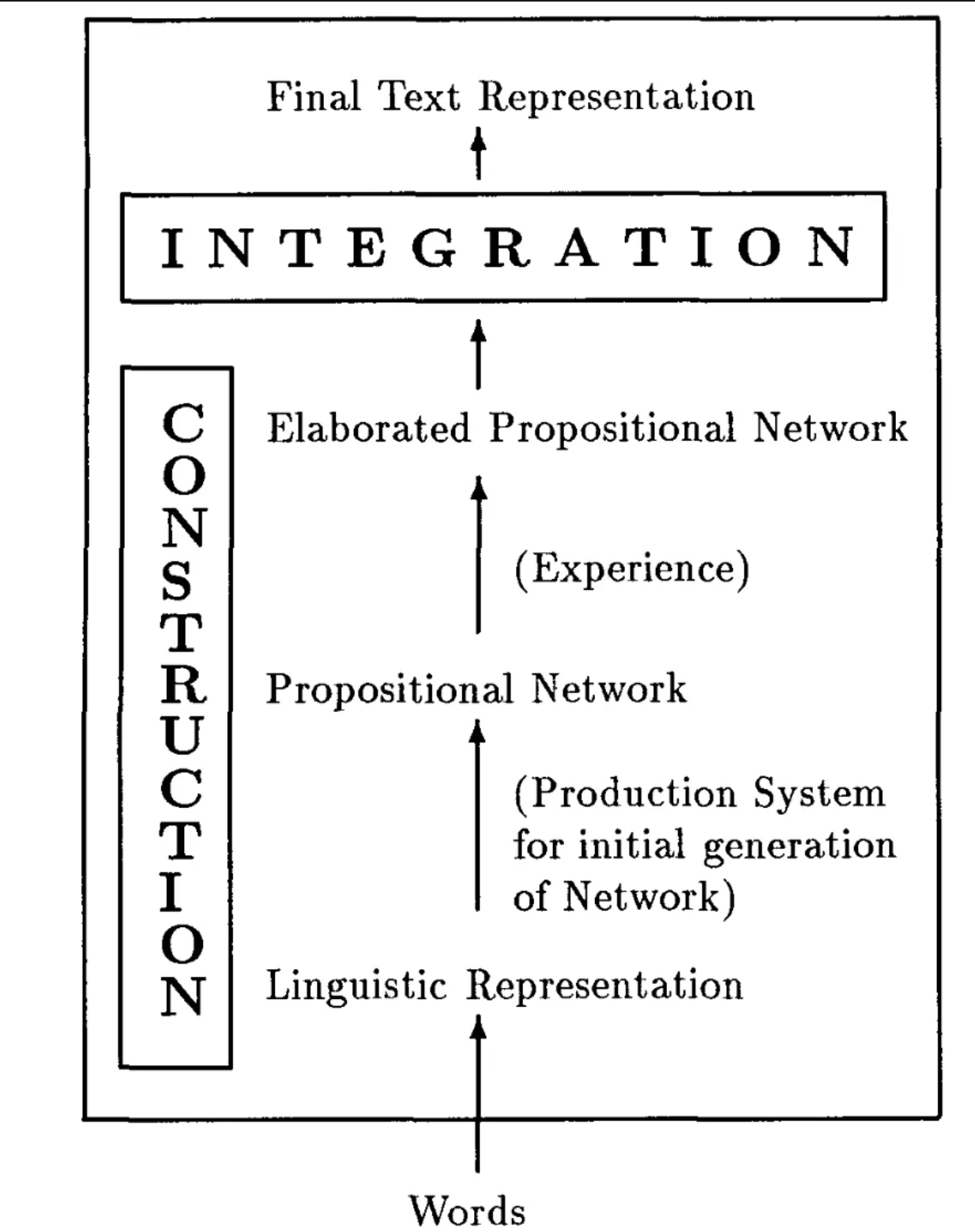
emphasis on bottom up process
- data driven comprehension
counter to computational theory, traditional top down.
- trad. emphasis on production/smart rules. these rules are hard to write
- CI model tries to overcome this
2 parts of the model
1. knowledge construction
- propositional network (statements that are T/F). propositional models are truth assignments to sets of propositions.
- if network influenced by comprehender’s own knowledge, elaborated propositional network
2. knowledge intergration
- rn, crude arrays of propositional nodes w pos/neg connections
- finds coherent representation, not on specifics or how info generated
- when CI model extended for routine computing, 2 new additions: procedural knowledge to experience based and propositional network AND simulate planning behaviour
BASICALLY: Ci model allows for more “slop” even w similar outcome. uses weaker rules

conclusion
The Construction-Integration Model appears to be a promising foundation upon which a general purpose cognitive architecture can be built. Its strength lies in its ability to handle issues of situated cognition naturally. Its choice to put the process of comprehension at the forefront, rather than not, also appears to have implications on task modelling in a data-driven, bottom-up paradigm. Additionally, the use of associative networks to represent a user's mental representation of a situation seems quite flexible. The fact that it is a hybrid model brings advantages which other architectures do not have: it has the benefit of a symbolic representation, but the computational power of connectionist networks.
CI argues world knowledge forms background of tasks
building blocks = propositions
- way of rewriting sentence to have one clear literal meaning
1. convert sentences to propositions
2. propositions → textbase. like brainstorm with arrows. link concepts together
3. nodes of textbase links to world knowledge
4. nodes activate related meanings, surpress contradictory ones
5. stabilises into coherent structure